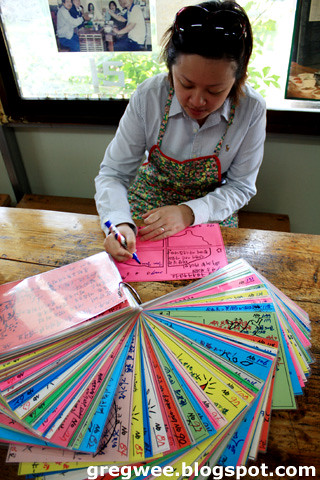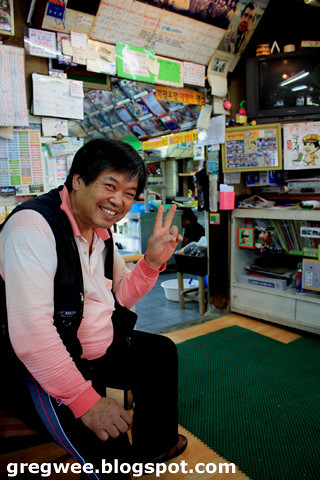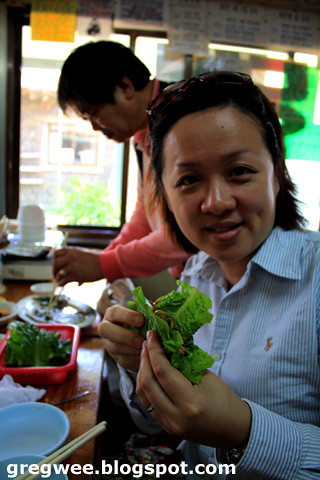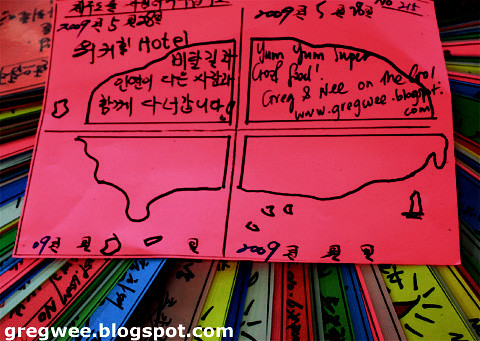It feels like we have not left Jeju at all. We're almost at the end of the year now, and we're still not done with our Korean holiday postings. This must be the longest holiday that we've ever had. If we're a TVB series, we'd be the longest running one in history. Nee is rolling her eyes.
There's this place called Seongeup Folk Village, which was the natural stop after Seongsan Sunrise Peak.
 Seongeup Folk Village used to be the administrative centre of the local government at one time. Then somehow or rather, it became a Folk Village for tourists. Putting this in the Malaysian perspective, it's almost as if Putrajaya gets recycled into a Folk Village one day, hundreds of years from now, or maybe sooner.
Seongeup Folk Village used to be the administrative centre of the local government at one time. Then somehow or rather, it became a Folk Village for tourists. Putting this in the Malaysian perspective, it's almost as if Putrajaya gets recycled into a Folk Village one day, hundreds of years from now, or maybe sooner.
There's this place called Seongeup Folk Village, which was the natural stop after Seongsan Sunrise Peak.
 Seongeup Folk Village used to be the administrative centre of the local government at one time. Then somehow or rather, it became a Folk Village for tourists. Putting this in the Malaysian perspective, it's almost as if Putrajaya gets recycled into a Folk Village one day, hundreds of years from now, or maybe sooner.
Seongeup Folk Village used to be the administrative centre of the local government at one time. Then somehow or rather, it became a Folk Village for tourists. Putting this in the Malaysian perspective, it's almost as if Putrajaya gets recycled into a Folk Village one day, hundreds of years from now, or maybe sooner.
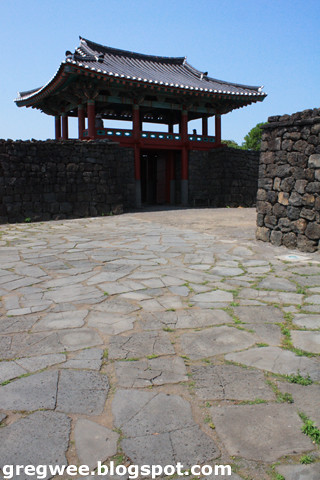 I hope this was not the Prime Minister's house then with traditional toilets. Otherwise his official diplomatic guests would really have to hold until the next venue.
I hope this was not the Prime Minister's house then with traditional toilets. Otherwise his official diplomatic guests would really have to hold until the next venue.
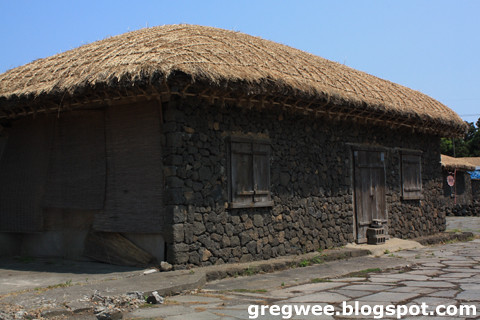 The Folk Village, as the name suggests, showcases the villagers' way of life, how they worked & lived back then. For example, Jeju is famous for the unique fences around the village houses. Reaching up to just around knee height, the fences were probably more as an obstacle to prevent farm animals from wandering into the garden, rather than to prevent Malaysian/illegal immigrant robbers from trespassing.
The Folk Village, as the name suggests, showcases the villagers' way of life, how they worked & lived back then. For example, Jeju is famous for the unique fences around the village houses. Reaching up to just around knee height, the fences were probably more as an obstacle to prevent farm animals from wandering into the garden, rather than to prevent Malaysian/illegal immigrant robbers from trespassing.
However, the fences have another socio-cultural role. Usually there'd be 3 bars up. One bar up means something like 'back in a while'. Two bars up mean 'out for the whole day'. Three bars up mean 'gone travelling'. It's not hard to guess which one ours would be.
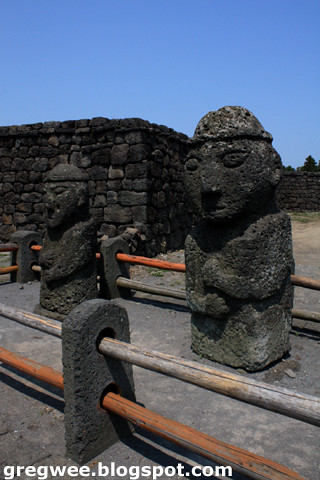 Jeju is also famous for these rock figures which you can find almost everywhere on the island. They're called Dolhareubang or Stone Grandfather. Made of volcanic rocks, they were once posted in the northern, eastern, western & southern gates of fortresses to guard the security, health & prosperity of the residents.
Jeju is also famous for these rock figures which you can find almost everywhere on the island. They're called Dolhareubang or Stone Grandfather. Made of volcanic rocks, they were once posted in the northern, eastern, western & southern gates of fortresses to guard the security, health & prosperity of the residents.
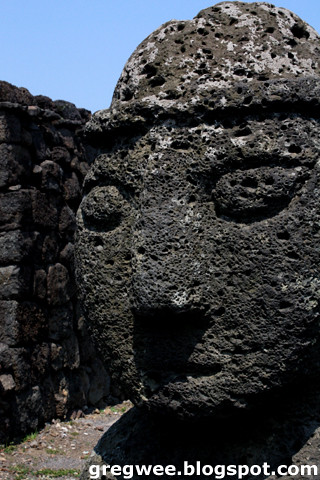 This post has probably misled you but on that day, we were not there to visit the Folk Village. Unbeknownst to worldly travellers & tourists out there, we were actually brought to a secret restaurant by our dear taxi driver Mr. Kim.
This post has probably misled you but on that day, we were not there to visit the Folk Village. Unbeknownst to worldly travellers & tourists out there, we were actually brought to a secret restaurant by our dear taxi driver Mr. Kim.
 This restaurant is called Gwantangnae, and it's located just outside the Seongeup Folk Village.
This restaurant is called Gwantangnae, and it's located just outside the Seongeup Folk Village.
 Now what we didn't know initially was that this place was 'off limits' to foreign tourists like us. So, if we had just stupidly walked into this restaurant, we'd be Tae-kwon-do kicked out. But fortunately, Mr. Kim had the local connections & were able to pull a few strings (actually just one) & kao teem for us.
Now what we didn't know initially was that this place was 'off limits' to foreign tourists like us. So, if we had just stupidly walked into this restaurant, we'd be Tae-kwon-do kicked out. But fortunately, Mr. Kim had the local connections & were able to pull a few strings (actually just one) & kao teem for us.
 Although we got there around noon, curiously there weren't a single costumer around. This was purported to be one of the most renowned restaurants in Jeju, extremely well-featured in all major TV food shows in South Korea, as the proud owner passionately attested.
Although we got there around noon, curiously there weren't a single costumer around. This was purported to be one of the most renowned restaurants in Jeju, extremely well-featured in all major TV food shows in South Korea, as the proud owner passionately attested.
 Before I could sit down, I was arm locked by the eccentric Mr. Gwantangnae himself & dragged away for an obligatory tour around the restaurant. Although he couldn't speak a word of English, you could tell that this guy was very passionate about his 'work'. On the walls were screen captures of all the TV appearances that he's ever made & he nudged me to make sure that I took pictures of those as evidence.
Before I could sit down, I was arm locked by the eccentric Mr. Gwantangnae himself & dragged away for an obligatory tour around the restaurant. Although he couldn't speak a word of English, you could tell that this guy was very passionate about his 'work'. On the walls were screen captures of all the TV appearances that he's ever made & he nudged me to make sure that I took pictures of those as evidence.
Then came the poses.

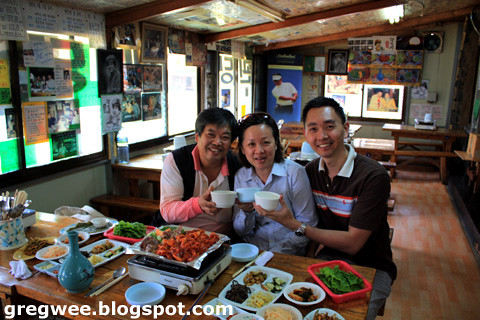 This was the only picture that we had of our dear taxi driver/tour guide/translator Mr. Kim. Although he may look like a member of the South Korean mafia taking us for a ride, behind those mysterious shades were the kindest pair of eyes that you'd ever find.
This was the only picture that we had of our dear taxi driver/tour guide/translator Mr. Kim. Although he may look like a member of the South Korean mafia taking us for a ride, behind those mysterious shades were the kindest pair of eyes that you'd ever find.
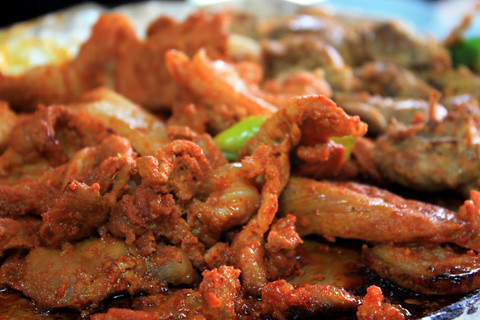 The restaurant also makes, packages & sell their own renowned buckwheat noodles, which were so soft that they almost blended with the soup & they would most definitely melt in the mouth.
The restaurant also makes, packages & sell their own renowned buckwheat noodles, which were so soft that they almost blended with the soup & they would most definitely melt in the mouth.
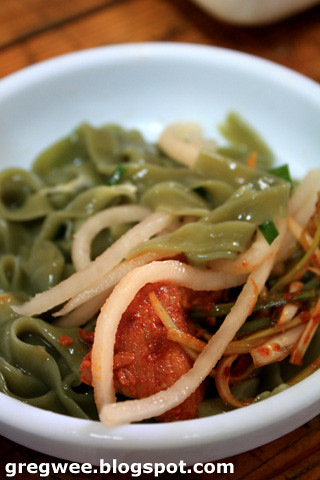 We bought a couple of packs of those noodles just to see how Mr. Gwantangnae looked like in the 80s.
We bought a couple of packs of those noodles just to see how Mr. Gwantangnae looked like in the 80s.
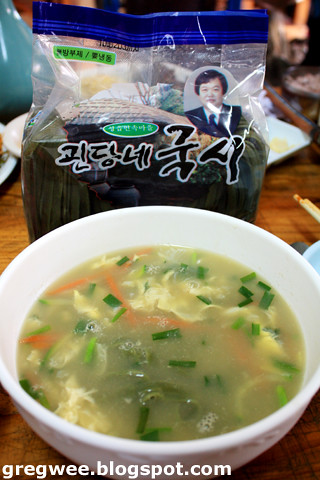 The lunch spread came with Soju, the Korean version of rice wine, which came down pretty strong, but was an excellent accompaniment to the meal, cos I didn't have to drive. So I had a taste of what it felt to be a real Korean man.
The lunch spread came with Soju, the Korean version of rice wine, which came down pretty strong, but was an excellent accompaniment to the meal, cos I didn't have to drive. So I had a taste of what it felt to be a real Korean man.

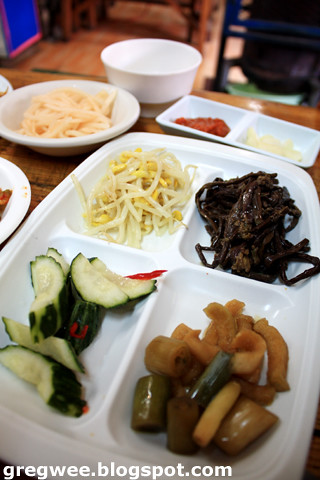 This was actually one of the highlights of our whole entire trip. We didn't expect such a gracious host who would sit with us, took interest in where we came from & what we do, & even extended an invitation for us to stay with him.
This was actually one of the highlights of our whole entire trip. We didn't expect such a gracious host who would sit with us, took interest in where we came from & what we do, & even extended an invitation for us to stay with him.
As a sign of our gratitude for such warmth & gracious hosting, we reciprocated by adding our business card to his collection.
